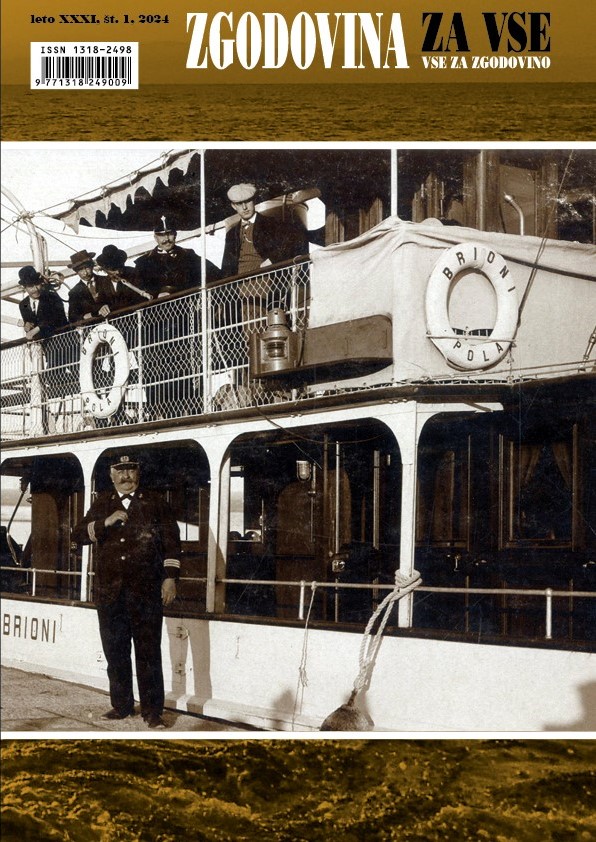Darja MIHELIČ
EVERYDAY LIFE IN MEDIEVAL KOPER AS REFLECTED IN THE CITY STATUTES
The Statutes of Koper of 1423 were divided into four parts (»books«). In total, they contain 244 statutory provisions (»chapters«), which comprehensively regulated the essential aspects of public and private life in and around the city. The article focuses on some of the aspects of everyday life regulated by the statutes and, through the statute decrees, concretizes and completes the image of the former civitas Iustinopolis.
Boris GOLEC
»THE ACT IS VIRTUALLY UNKNOWN IN PUBLIC, EXCEPT TO A FEW WOMEN«
On a forbidden relationship and its fruit in “a more reputable family« in the early 19th Century
In 1805, Janez Anton Vidic, a widowed 63-year-old toller in Kostanjevica na Krki, gave birth to an illegitimate daughter from his relationship with his 28-year-old niece Jožefa, the daughter of his deceased brother. The child was baptised in the neighbouring parish of Raka, and Vidic asked the Ljubljana Archdiocesan Ordinariate for permission to marry, but because of the complicated and expensive procedure – the decision would have to have been made in Vienna and Rome – was denied it. The second part of the paper deals with the social and genetic background of unmarried spouses – uncle and niece. It was a family of tollers and merchants, whose roots went back to the towns of Kamnik, Ljubljana and Radovljica, whose ancestors included town magistrates and councillors, and whose close family included five priests in three generations from the end of the 17th century onwards. Like Janez Anton Vidic, many of his relatives attended the Jesuit Gymnasium in Ljubljana.
Filip ČUČEK
FLOODING “HITS THE CITY OF CELJE AND ITS SURROUNDINGS ONCE OR EVEN TWICE ALMOST EVERY YEAR.«
Flood Protection Measures in Celje and the Savinja Valley in the First Half of the 19th Century
Due to snowmelt and heavy rainfall, Savinja, which originated in the mountains, together with its tributaries often flooded considerably in the past. In the first half of the 19th century, the Savinja Valley was hit by major floods in 1805, 1807, 1814, 1820, 1824, 1833 and 1847. The Celje District Office dealt with the river and its tributaries since the beginning of the 19th century. Up until the mid-19th century, the clearing of the riverbed, the construction of embankments and the consolidation of the banks had to be undertaken by the affected landowners, with plans drawn up by the district (later county) engineer. But the work progressed slowly, and was of an emergency nature, so that it was not particularly effective in major floods.
Andrej RAHTEN
THE HABSBURG HEIR TO THE THRONE IN BRIJUNI
From the legacy of the Slovenian financial watchdog
This article presents the imperial era of the Brijuni tourist resort, based on the family legacy of the Slovenian financial guard Jurij Turk. The focus is on the heir to the throne, Franz Ferdinand, who was a frequent visitor to the Adriatic Sea as an advocate of strengthening the Habsburg Monarchy’s naval fleet, and who also visited Brijuni for health reasons. In addition to sources from the Turks’ archives, press reports, including those of the Brioni Insel Zeitung, are also evaluated.

